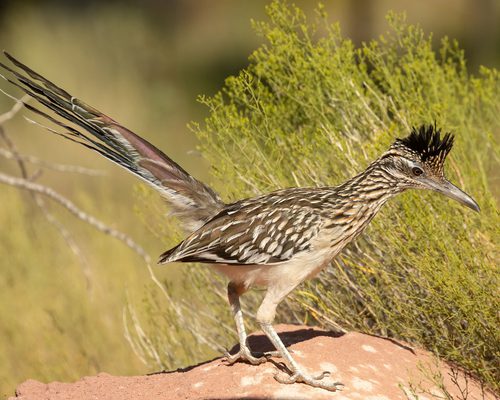If you've ever spotted a roadrunner darting across the desert, you might wonder about those rarely-seen wings. While these birds can streak across the ground at a blistering 27 mph, they absolutely can fly - just not in the way most people expect.
Watch a roadrunner's feet as they dart past, and you'll notice something peculiar - their unique four-toed feet with two toes pointing forward and two backward, perfect for gripping the ground at high speeds.
These remarkable feet, combined with powerful legs, make them the fastest flying-capable bird on earth when it comes to running. Though "flying-capable" might be stretching it a bit.

Roadrunner in flight
You'll typically spot them hop-gliding between low branches or making short flights up to a fence post to scan for prey. Their flights are brief but purposeful - quick bursts covering maybe 15 feet at most.
They simply can't fly far - their breast lacks the deep keel bone that other birds use to anchor strong flight muscles. Instead, those tiny flight muscles are just enough to get them out of trouble when running won't do.

Greater Roadrunner leaping from a rock
During the breeding season, pairs build their nests surprisingly low - usually just a few feet off the ground in thorny brush or cacti. It's another sign of their ground-dwelling nature.
But don't underestimate their agility - these crafty hunters can leap startlingly high from a standing start to snatch birds and insects right out of the air.
On cool mornings, you might catch one perched on a rocky outcrop, wings spread wide to soak up the sun's warmth. But soon enough, they'll drop back to earth, racing across the desert with that long tail acting as a rudder.
Those short, rounded wings might not be built for soaring, but they're perfect for what roadrunners do best - living life in the fast lane at ground level.

Roadrunners can jump high into the sky from the ground

